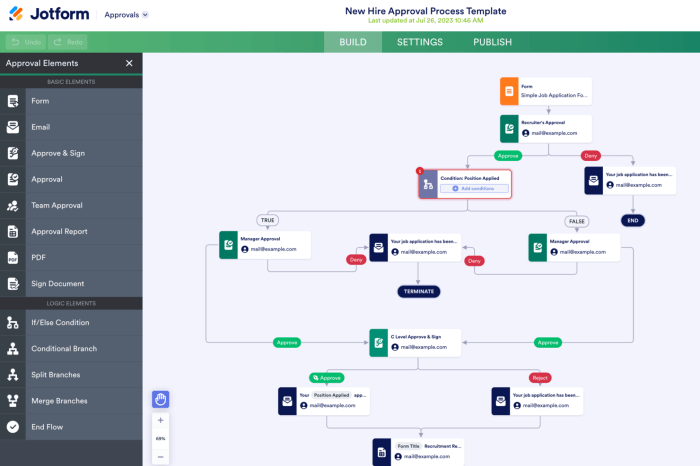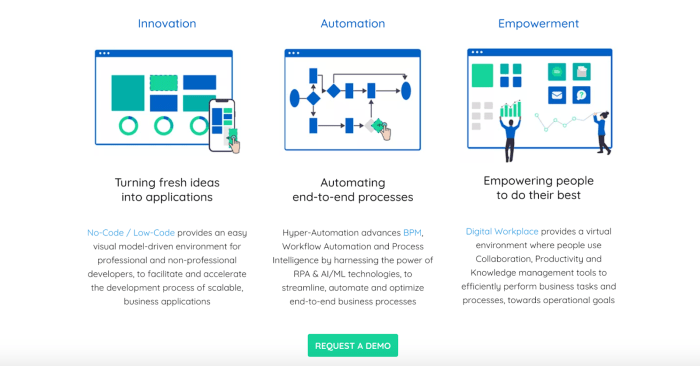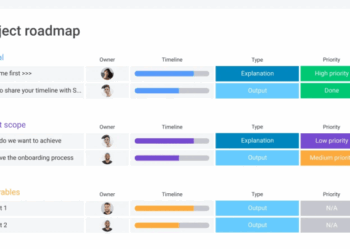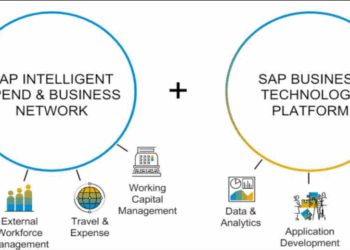Exploring the realm of Workflow Management Tools That Scale With Your Business, this introduction sets the stage for an intriguing discussion on how these tools can revolutionize business operations. From streamlining processes to fostering growth, the impact of scalable tools is profound and transformative.
As we delve deeper into the key features, implementation strategies, and real-world case studies, a comprehensive understanding of how these tools can elevate your business awaits.
Importance of Workflow Management Tools
Workflow management tools play a crucial role in helping businesses streamline their processes and improve efficiency. These tools are designed to automate repetitive tasks, assign responsibilities, track progress, and ensure that deadlines are met effectively.
Enhanced Productivity
By implementing workflow management tools, businesses can eliminate manual errors, reduce delays, and improve overall productivity. Tasks are organized in a systematic manner, allowing employees to focus on their core responsibilities without getting bogged down by administrative tasks.
Improved Collaboration
Workflow management tools enable better collaboration among team members by providing a centralized platform for communication and task management. Team members can easily track the progress of projects, share updates, and collaborate in real-time, leading to enhanced teamwork and efficiency.
Scalability for Business Growth
Using scalable workflow management tools is essential for businesses looking to grow and expand. These tools can adapt to the changing needs of a growing business, accommodating an increasing number of users, tasks, and projects without compromising efficiency. Scalable tools ensure that businesses can continue to operate smoothly as they expand their operations.
Key Features of Scalable Workflow Management Tools
Scalable workflow management tools are essential for businesses looking to streamline their processes and adapt to changing needs. These tools should have key features that enable them to grow alongside the business and meet evolving requirements.
Scalability
One of the most critical features of workflow management tools is scalability. The ability to handle increasing volumes of work, users, and data is crucial for a tool to be considered scalable. Tools should be able to grow with the business without sacrificing performance or efficiency.
Customization
- Customizable workflows: Tools should allow businesses to create custom workflows tailored to their specific needs and processes.
- Role-based access: The ability to assign different roles and permissions to users ensures that the right people have access to the right information.
- Integration with existing systems: Tools should seamlessly integrate with other software and systems already in use within the organization.
Flexibility and Adaptability
Flexibility and adaptability are essential for scalable workflow management tools. Businesses evolve, and processes change over time. Tools need to be flexible enough to accommodate these changes without requiring a complete overhaul. The ability to make adjustments on the fly and adapt to new requirements is key.
Automation Capabilities
- Automated tasks: Tools should have built-in automation capabilities to streamline repetitive tasks and reduce manual intervention.
- Trigger-based actions: The ability to trigger actions based on specific events or conditions helps in automating complex workflows.
Implementing Workflow Management Tools
Implementing workflow management tools in a business environment is crucial for optimizing processes and enhancing productivity. Here are some steps and tips for successfully integrating scalable tools and training employees effectively to ensure a smooth transition.
Steps for Implementing Workflow Management Tools:
- 1. Assess Needs and Requirements: Identify the specific workflows that need improvement and determine the key features required in the management tool.
- 2. Research and Select the Right Tool: Explore different workflow management tools available in the market, considering scalability, customization options, and user-friendly interface.
- 3. Customization and Configuration: Tailor the tool to fit the unique workflow processes of your business, including setting up workflows, user permissions, and notifications.
- 4. Pilot Testing: Conduct a pilot test with a small team to identify any potential issues or areas for improvement before full implementation.
- 5. Training and Onboarding: Provide comprehensive training sessions to employees on how to use the tool effectively, including best practices and troubleshooting techniques.
- 6. Full Implementation: Roll out the workflow management tool across all departments gradually, ensuring a smooth transition and addressing any challenges promptly.
Tips for Training Employees on Using Workflow Management Tools Effectively:
- 1. Provide Hands-On Training: Offer interactive training sessions where employees can practice using the tool in real-life scenarios.
- 2. Create User Guides and Resources: Develop user-friendly guides, tutorials, and FAQs to help employees navigate the tool independently.
- 3. Encourage Feedback and Collaboration: Foster a culture of feedback and collaboration to continuously improve the use of the tool and share best practices among employees.
Common Challenges Faced During Implementation and How to Overcome Them:
- 1. Resistance to Change: Address resistance by clearly communicating the benefits of the new tool, providing support, and involving employees in the decision-making process.
- 2. Integration Issues: Ensure seamless integration with existing systems and workflows by working closely with IT and relevant stakeholders during the implementation process.
- 3. Lack of Adoption: Encourage adoption by demonstrating the tool's value, offering ongoing support, and recognizing and rewarding employees who use it effectively.
Case Studies

Workflow management tools have played a crucial role in the success of many businesses by enhancing productivity, streamlining processes, and improving collaboration. Let's delve into some real-life examples of businesses that have benefited from scalable workflow management tools.
Tech Company X
One tech company, Company X, implemented a scalable workflow management tool to streamline their project management processes. By automating repetitive tasks, assigning roles efficiently, and tracking progress in real-time, they were able to increase productivity by 30% within the first quarter of implementation.
The tool also improved collaboration among team members, leading to quicker decision-making and smoother project execution. As a result, Company X was able to take on more projects without compromising quality, ultimately boosting their overall business performance.
E-commerce Store Y
Another example is E-commerce Store Y, which integrated a scalable workflow management tool to optimize their order fulfillment process. By automating order processing, inventory management, and shipping notifications, they were able to reduce errors and turnaround time significantly. This not only led to improved customer satisfaction but also increased efficiency in their operations.
As a result, E-commerce Store Y saw a 20% increase in sales and a decrease in operational costs, highlighting the positive impact of scalable workflow management tools on business growth.
Epilogue

In conclusion, Workflow Management Tools That Scale With Your Business offer a pathway to enhanced productivity, seamless collaboration, and sustainable success. By embracing the power of scalable tools, businesses can navigate challenges and seize opportunities with agility and efficiency.
Answers to Common Questions
How do workflow management tools benefit businesses?
Workflow management tools enhance efficiency by streamlining processes, improving communication, and increasing accountability within organizations.
What are some essential features of scalable workflow management tools?
Essential features include scalability for growth, customization options, seamless integration with existing systems, and flexibility to adapt to changing business needs.
How can businesses overcome challenges during the implementation of these tools?
Businesses can overcome implementation challenges by providing thorough training to employees, addressing resistance to change, and actively seeking feedback for continuous improvement.










